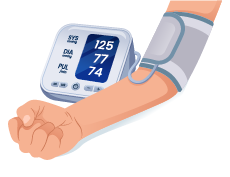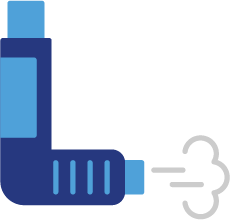How Accessible Medication Improves Life
- neighborspharmacy
- Feb 24
- 4 min read
Access to medication is crucial for maintaining good health and effectively managing chronic conditions. This is at the core and root of Neighbor's values and commitments to our community. When medicines are easily available and affordable, individuals can adhere to their prescriptions, leading to improved health outcomes. This accessibility is especially important for people dealing with chronic conditions like diabetes and high cholesterol, where consistent medication use is essential.
Many communities face barriers to obtaining necessary medications. These challenges include high costs, limited availability, or lack of insurance coverage. Finding ways to make medication affordable and accessible can have a significant impact on overall community health and wellness.
By overcoming these obstacles, more people can enjoy better health, fewer complications, and a higher quality of life.

Understanding Accessible Medication
Accessible medication refers to the availability and affordability of necessary prescription drugs for all individuals, regardless of their financial status or location.
Having easy access to medications is essential for maintaining community health because it enables individuals to manage chronic conditions, treat acute illnesses, and prevent complications efficiently. When medications are accessible, people can adhere to prescribed treatments, which leads to better health outcomes.
Several barriers can hinder access to necessary prescription drugs. High medication costs are a significant obstacle, especially for uninsured or underinsured individuals. Many people face difficult choices between buying medicines and meeting other basic needs, like food or housing. Geographic barriers also play a role, particularly in rural areas where pharmacies may be scarce.
Other barriers include lack of transportation to reach pharmacies and limited knowledge about available programs that offer financial assistance. Language differences and complicated insurance processes can also deter people from obtaining the medications they need.
Understanding and addressing these barriers is crucial for ensuring everyone can receive the prescriptions essential for their health. By focusing on these challenges, communities can work towards creating systems where affordable and accessible medication is a reality for all.
The Benefits of Accessible Medication
Access to medications significantly improves health outcomes and enhances quality of life. When people can consistently take prescribed drugs, they manage their health conditions more effectively. This leads to fewer hospital visits, reduced medical emergencies, and overall better health. By maintaining regular medication routines, individuals experience fewer disruptions to their daily lives, allowing them to work, engage in social activities, and live independently.
Chronic conditions particularly benefit from continuous access to medication:
Diabetes: Regular access to insulin and oral medications helps maintain stable blood sugar levels, reducing the risk of serious complications.
High Blood Pressure: Consistent use of antihypertensive medications prevents strokes and heart disease.
Asthma: Access to inhalers and other medications helps manage symptoms and prevent severe asthma attacks.
High Cholesterol: Medications help manage cholesterol levels, reducing the risk of cardiovascular issues.
The impact of accessible medication extends beyond individual health. It benefits families and communities by reducing the economic burden associated with untreated conditions. Children whose parents have controlled health conditions are likely to experience more stable home environments.
Overall, accessible medication is a cornerstone of public health, fostering healthier communities and reducing healthcare costs in the long run.
Reducing Medication Costs Through Community Resources
High medication costs can prevent many people from accessing necessary prescriptions. Community resources play a vital role in making these medications more affordable. Various programs and nonprofit organizations focus on reducing expenses for individuals in need.
Local health clinics, government initiatives, and charitable organizations collaborate to provide affordable and even free medications to those who qualify. Several approaches help lower medication costs:
Generic Drugs: Opting for generic medications is a smart way to save money. These drugs are as effective as their branded counterparts but cost significantly less. Doctors and pharmacists can assist in finding generic alternatives.
Patient Assistance Programs: Many pharmaceutical companies offer assistance programs to help individuals afford their medications. These programs often provide significant discounts or free prescriptions to those who meet certain criteria.
Nonprofit Organizations: Charitable groups often run initiatives aimed at supplying medications at reduced costs. They may offer direct support or act as intermediaries with pharmaceutical companies.
To locate affordable medication options, begin by asking your doctor or pharmacist about generics and patient assistance programs. Research local community health centers and nonprofits to see if they offer resources that align with your needs.
By taking advantage of these community resources, individuals can significantly reduce their medication costs, ensuring continuous access to necessary prescriptions.
The Role of Accessible Medication in Preventive Care
Accessible medication is an essential component of preventive health care. By making medications available and affordable, individuals can engage in consistent treatment plans and manage their conditions effectively. This helps prevent the escalation of diseases and reduces the likelihood of serious complications.
Regular access to medication, such as diabetes and blood pressure management drugs, supports routine health measures like screenings and check-ups. When individuals adhere to prescribed treatments, healthcare providers can more easily track progress and make informed decisions about ongoing care.
Preventive care offers long-term health benefits, including lower healthcare costs. When individuals use medications as a preventive measure, they experience fewer hospital visits, reduced emergency care, and minimized need for costly interventions. This not only saves money but also helps people maintain better overall wellness.
By prioritizing accessible medication, communities enable individuals to participate in preventive health care actively. This approach fosters healthier individuals and communities, resulting in improved quality of life and a reduction in long-term healthcare expenses.
Accessibility Can Improve Your Life
Access to affordable medication is key to managing health effectively and ensuring long-term wellness. By understanding the importance of accessible medication and utilizing available resources, individuals can navigate the healthcare system with confidence.
Programs that minimize medication costs and emphasize preventive care help create communities where health and well-being are accessible to all. At My Neighbor’s Charitable Pharmacy, we are devoted to supporting this mission by providing valuable resources and access to healthcare to those in need.
Explore how we can make a positive difference in your health journey today.





